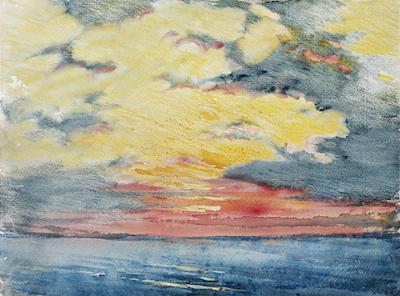We all dream about faraway lands, with miles of sandy beaches, palm trees rustling in the wind, the sound of waves. This idyllic escape is generally associated with countries in the southern hemisphere, notably in the Pacific and Central and South America. Just as we are allured by these sunbathed images of the south, artists throughout history have been inspired by them. Visions of the South explores some of the ways in which artists from the 18th to the 20th century depicted the south, and how their vision shifted from a classical concept to a more exotic or realistic one.
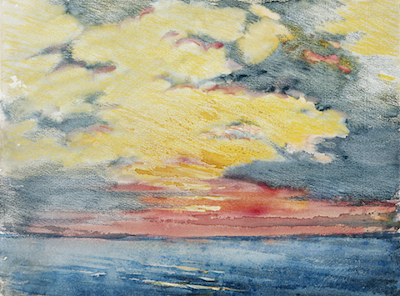 Joseph Pennell, Sunset, Acapulco, c. 1912, Mr. and Mrs. William Preston Harrison Collection
Joseph Pennell, Sunset, Acapulco, c. 1912, Mr. and Mrs. William Preston Harrison Collection
Representations of the south have long occupied an important place in European art. The “south,” as defined from a Eurocentric point of view, has referred not only to a geographic reality (Northern and Southern Europe), but also to philosophical concepts going back to antiquity. A lasting idea of the south has crystallized around the notion of Arcadia, described by the Roman poet Virgil as a utopian place with pastoral landscapes where mankind lived in peace and abundance.
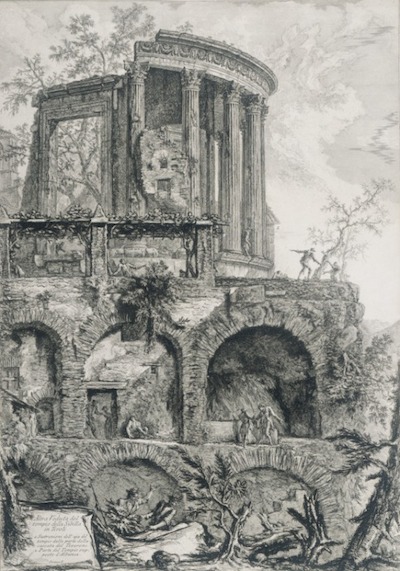 Giovanni Battista Piranesi, Another View of the Temple of the Sibyl in Tivoli, c. 1761, gift of Mr. and Mrs. M. F. Grollman
Giovanni Battista Piranesi, Another View of the Temple of the Sibyl in Tivoli, c. 1761, gift of Mr. and Mrs. M. F. Grollman
With the idea of Arcadia in mind, artists came to Italy, attracted by the country’s profuse richness of archaeological remains of the Roman Empire, set in picturesque landscape and bathed in the warm light of the southern sun. This ideal vision of the south found its most complete expression in the paintings of Nicolas Poussin and Claude Lorrain, two classical artists of the 17th century, who both lived and worked in Rome and depicted frequently the monuments and surroundings of the city. Artists in the 18th century followed in their footsteps and continued to represent the famous monuments and locations which were then sought out by travelers on the Grand Tour—a traditional trip to Italy undertaken by mostly English aristocrats—thus further shaping the classical vision of the south.
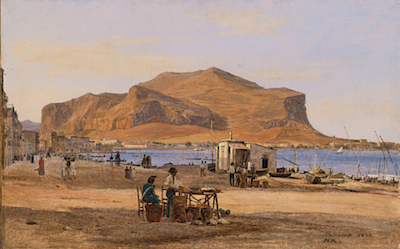 Martinus Rørbye, Palermo Harbor with a View of Monte Pellegrino, 1840, gift of the 1990 Collectors Committee
Martinus Rørbye, Palermo Harbor with a View of Monte Pellegrino, 1840, gift of the 1990 Collectors Committee
The lushness of Mediterranean nature and the clear blue sky also favored open-air painting, which became increasingly popular during the 19th century. Colonies of painters from Northern Europe, especially Germany, France, and Scandinavia would travel to Italy and settle there; Rome and the Roman countryside were particularly sought, but soon these artists ventured further south, toward Naples, the Amalfi Coast, and Sicily. They would set up their easel in nature, sketching fugitive impressions of atmospheric phenomena and the ever changing light effects.
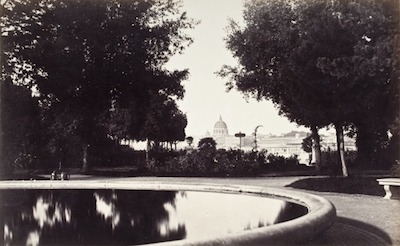 James Anderson, St. Peter's From Pincian Hill, 1860s, the Marjorie and Leonard Vernon Collection, gift of the Annenberg Foundation, acquired from Carol Vernon and Robert Turbin
James Anderson, St. Peter's From Pincian Hill, 1860s, the Marjorie and Leonard Vernon Collection, gift of the Annenberg Foundation, acquired from Carol Vernon and Robert Turbin
With the advent of photography in the mid-19th century, many artists quickly adopted this new way of documenting their surrounding world. Photographers travelled through Italy, following the path of landscape painters, visiting Rome, Florence, Naples, and Venice, and depicting landscapes, famous monuments, such as the Colosseum and St. Peter’s.
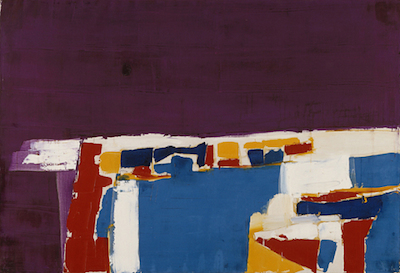 Nicolas de Staël, View of Marseille, c. 1955, Modern Art Department, Estate of Hans G. M. De Schulthess © 2014 Artists Rights Society (ARS), New York / ADAGP, Paris
Nicolas de Staël, View of Marseille, c. 1955, Modern Art Department, Estate of Hans G. M. De Schulthess © 2014 Artists Rights Society (ARS), New York / ADAGP, Paris
Italy, however, was soon to be replaced by other regions: France’s Provence, in particular, became increasingly popular in the late 19th and early 20th century, offering lesser-known terrains and a light different from the warm Italian sun. Following in the footsteps of Paul Cézanne, Claude Monet, and Henri Matisse, many artists spent significant parts of their careers in southern France, notably in Collioure, Antibes, and Cannes on the Mediterranean coast. Their art was deeply affected by the bright coastline and the distinctive landscape of Provence. The abstract painter Nicolas de Staël found in southern France to a brighter palette, inspired by the strong light of Provence and the shimmering Mediterranean Sea. He created luminous and highly abstract views of the South during the last years of his life.
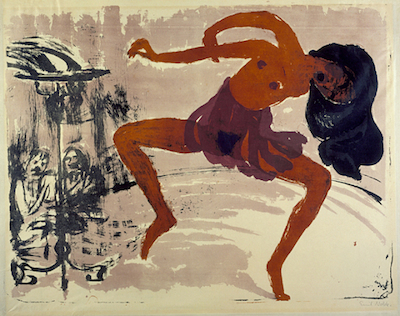 Emil Nolde, Dancer, 1913, the Robert Gore Rifkind Center for German Expressionist Studies, © Nolde Stiftung Seebüll, Germany
Emil Nolde, Dancer, 1913, the Robert Gore Rifkind Center for German Expressionist Studies, © Nolde Stiftung Seebüll, Germany
The notion of the south would also extend to more distant lands. With the rise of colonialism in the 19th century, scientific expeditions documented faraway regions, and artists were hired to depict the exotic cultures and landscapes, notably in the Pacific. By the end of the 19th century, illustrated magazines had featured images of exotic locations and Pacific artworks had been shown in various exhibitions in Europe. Many of the German Expressionists, especially members of the Brücke (the Bridge), were drawn to these exotic objects and frequently used them as motifs in their works. Some of these artists, such as Max Pechstein and Emil Nolde, were even inspired to travel to the South Seas in search of unspoiled nature and simple life.
Other “visions” of the south are presented in the exhibition through an original film, conceived for this exhibition, which gives voice to writers such as Johann Wolfgang von Goethe, Charles Baudelaire, Henry James, and Robert Louis Stevenson as well as to artists like Max Pechstein, Emil Nolde, and Nicolas de Staël.
Frauke Josenhans, Curatorial Assistant, Robert Gore Rifkind Center for German Expressionist Studies



